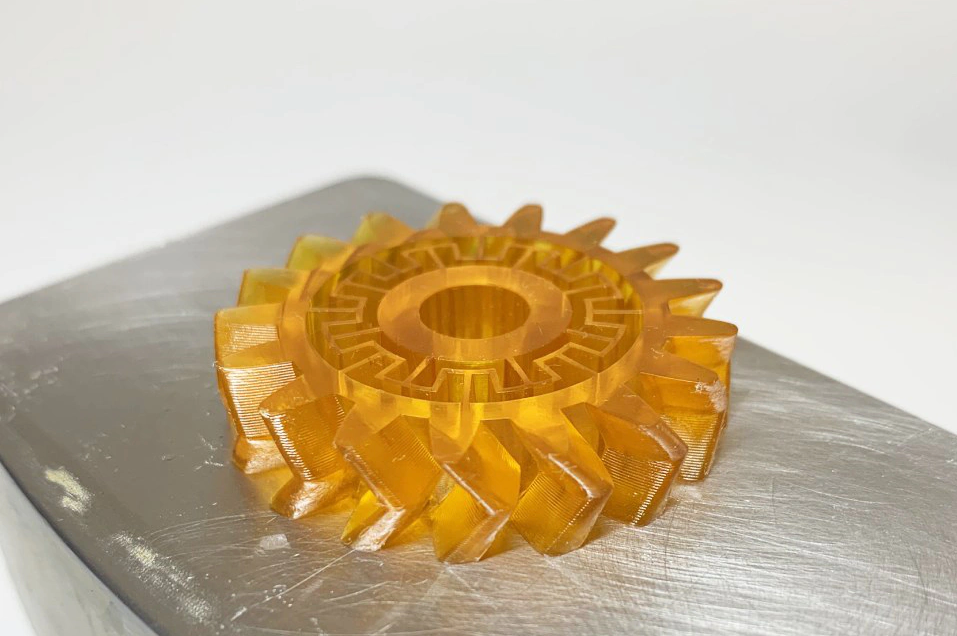Continuing our series looking at the State of Resin 3D Printing, Raymond Weitekamp, polySpectra Founder and CEO gives us his insights into the wider adoption of photopolymer-based 3D printing.
3D Printing Industry: How have you seen resin-based 3D printing develop in recent years?
Raymond Weitekamp: I’ve been excited to see the sheer number of new SLA/DLP/LCD printers now available in the world. As a chemist, I’ve also been really excited to see an increasing number of “open” printers – there is finally a healthy ecosystem of compatible software <> hardware <> resin. When we first started working in 3D printing, the Autodesk Ember (RIP) was the only open printer! Now, it is very clear that additive manufacturing end users are going to choose the best combination of software/hardware/chemistry for their specific applications, without the full solution stack needing to come from one company.

3D Printing Industry: What do you consider the next technology hurdles for photopolymer-based 3D printing to overcome?
Raymond Weitekamp: Process simplicity and Design for Additive Manufacturing (DfAM). The photopolymer print process needs to be much closer to “just click print” than it is today. There are still way too many tricks, tools, and workarounds required to be really successful in a production AM environment. Once the process has been simplified, then the community could start to see the benefits of automation. It is also surprising to me that almost no one knows how to design for photopolymer printing. I guess we can’t blame the engineers, because most photopolymers can’t meet their product durability requirements, so why would they bother learning the design rules? While our core competency at polySpectra is in photopolymer chemistry, we have needed to become experts in DfAM simply to help our customers to be successful.
3D Printing Industry: What applications of vat photopolymerization do you see as under-developed by the market, and why?
Raymond Weitekamp: Every application area other than dental, jewelry, and audiology is underdeveloped! While everyone has a press release for their 3D-printed _____, how many durable goods companies outside of these three areas are actually using photopolymer AM to manufacture their products? Almost none. Even at large organizations with big teams dedicated to AM, production is still the exception – almost everything is prototyping. Some of the applications that we are really excited about for our Cyclic Olefin Resin products are electrical connectors, fluidic manifolds, electronics housings, lightweight vehicle components, gears, impellers, heat-exchangers, long-lasting inserts for thermoplastic molding, robotic end-effectors, and personalized medical devices.
3D Printing Industry: Where are opportunities for materials development in regards to vat photopolymerization technology?
Raymond Weitekamp: One major opportunity is for the AM community to work with standards-setting organizations (such as FDA, FAA, NIST, IEEE, ASTM) to collaborate to create clear standards for photopolymer materials qualification. These regulatory hurdles didn’t matter in the days of rapid prototyping and rapid tooling – but they are a major barrier to the adoption of production additive manufacturing. There are so many innovations in photopolymerization, but without a clear set of guidelines for how to safely steward these innovations into products that will be directly used by everyday consumers, these innovations will never achieve their amazing potential.
Read more in this series: The State of Resin 3D Printing.
Make sure you don’t miss the results of our 3D printing with resin survey. Sign up for our free newsletter for the latest news in additive manufacturing. You can also stay connected by following us on Twitter and liking us on Facebook.
Subscribe to our YouTube channel for the latest 3D printing video reviews, shorts, and webinar replays. Looking for a career in additive manufacturing? Visit 3D Printing Jobs for a selection of roles in the industry.


